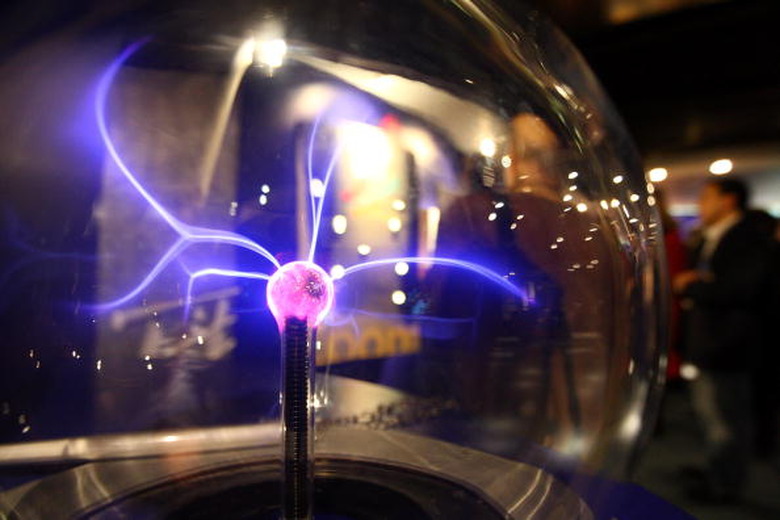How To Calculate Energy With Wavelength
Is light a wave or a particle? It's both at the same time, and actually, the same is true for electrons, as Paul Dirac demonstrated when he introduced his relativistic wave function equation in 1928. As it turns out, light and matter – pretty much everything that composes the material universe – is composed of quanta, which are particles with wave characteristics.
A major landmark on the road to this surprising (at the time) conclusion was the discovery of the photoelectric effect by Heinrich Hertz in 1887. Einstein explained it in terms of quantum theory in 1905, and since then, physicists have accepted that, while light may behave as a particle, it is a particle with a characteristic wavelength and frequency, and these quantities are related to the energy of the light or radiation.
Max Planck Related Photon Wavelength to Energy
The wavelength converter equation comes from the father of quantum theory, German physicist Max Planck. Around 1900, he introduced the idea of the quantum while studying the radiation emitted by a black body, which is a body that absorbs all incident radiation.
The quantum helped explain why such a body emits radiation mostly in the middle of the electromagnetic spectrum, rather that in the ultraviolet as predicted by classical theory.
Planck's explanation posited that light consists of discrete packets of energy called quanta, or photons, and that the energy could only take on discrete values, which were multiples of a universal constant. The constant, called Planck's constant, is represented by the letter h, and has a value of 6.63 × 10-34 m2 kg / s or equivalently 6.63 × 10-34 joule-seconds.
Planck explained that the energy of a photon, E, was the product of its frequency, which is always represented by the Greek letter nu (ν) and this new constant. In mathematical terms: E = hν.
Since light is a wave phenomenon, you can express Planck's equation in terms of wavelength, represented by the Greek letter lambda (λ), because for any wave, the velocity of transmission is equal to its frequency times its wavelength. Since the speed of light is a constant, denoted by c, Planck's equation can be expressed as:
\(E = \frac{hc}{λ}\)
Wavelength to Energy Conversion Equation
Wavelength to Energy Conversion Equation
A simple rearrangement of Planck's equation gives you an instant wavelength calculator for any radiation, assuming you know the energy of the radiation. The wavelength formula is:
\(λ = \frac{hc}{E}\)
Both h and c are constants, so the wavelength to energy conversion equation basically states that wavelength is proportional to the inverse of energy. In other words, long wavelength radiation, which is light toward the red end of the spectrum, has less energy that short wavelength light on the violet end of the spectrum.
Keep Your Units Straight
Keep Your Units Straight
Physicists measure quantum energy in a variety of units. In the SI system, the most common energy units are joules, but they are too big for processes that happen on the quantum level. The electron-volt (eV) is a more convenient unit. It's the energy required to accelerate a single electron through a potential difference of 1 volt, and it's equal to 1.6 × 10-19 joules.
The most common units for wavelength are ångstroms (Å), where 1 Å = 10-10 m. If you know the the energy of a quantum in electron-volts, the easiest way to get the wavelength in ångstroms or meters is to first convert the energy to joules. You can then plug it directly into Planck's equation, and using 6.63 × 10-34 m2 kg/s for Planck's constant (h) and 3 × 108 m/s for the speed of light (c), you can calculate the wavelength.
Cite This Article
MLA
Deziel, Chris. "How To Calculate Energy With Wavelength" sciencing.com, https://www.sciencing.com/calculate-energy-wavelength-8203815/. 22 December 2020.
APA
Deziel, Chris. (2020, December 22). How To Calculate Energy With Wavelength. sciencing.com. Retrieved from https://www.sciencing.com/calculate-energy-wavelength-8203815/
Chicago
Deziel, Chris. How To Calculate Energy With Wavelength last modified August 30, 2022. https://www.sciencing.com/calculate-energy-wavelength-8203815/
